
Introduction
Yes, you heard the title right, you are hearing both “SAPPHIRE” and “Motherboard” in the same sentence. Up until now, SAPPHIRE Technology has mainly been well-known for its GPU lineup, with a history in delivering top-tier AMD-based GPU video cards for all sectors, including DIY enthusiasts and gamers, and is the largest supplier of AMD-based graphics cards in the world. Today, we’ll be taking a first look and full review of the SAPPHIRE NITRO+ B850A WIFI 7 motherboard with an MSRP of $189.99.
SAPPHIRE did actually produce motherboards in its early years, but has been out of that game for a long time, until now. SAPPHIRE is well known for its line of GPUs, ranging from its PULSE to PURE, to NITRO+, to the TOXIC lineup. Using that same branding, SAPPHIRE is testing the waters with motherboards in today’s current era of AM4/AM5 AMD motherboards across its SAPPHIRE, PULSE, and NITRO+ branding. SAPPHIRE claims that the SAPPHIRE NITRO+ B850A WIFI 7 is engineered to deliver premium features and cutting-edge connectivity at a competitive price point, designed for enthusiasts, gamers, and professionals.
Starting from the top, you’ll find under the NITRO+ lineup two motherboards offered based on the AMD AM5 socket and AMD B850 chipset. There is the SAPPHIRE NITRO+ B850A WIFI 7 (which we are reviewing, SKU# 52123-03-40G) as well as the SAPPHIRE NITRO+ B850M WIFI, which is a Micro-ATX form-factor version of the board we are reviewing. Next down the lineup are the PULSE motherboards, with the PULSE B850 and PULSE A620, naturally, an AMD B850 chipset and AMD A620 chipset motherboards in the Micro-ATX form factor. Finally, at the bottom are the SAPPHIRE B650 and SAPPHIRE A520, a B650 chipset motherboard and an A520 chipset motherboard. At this time, there aren’t any AMD X870/E chipset-based motherboards, but SAPPHIRE is open to the possibility.
SAPPHIRE NITRO+ B850A WIFI 7
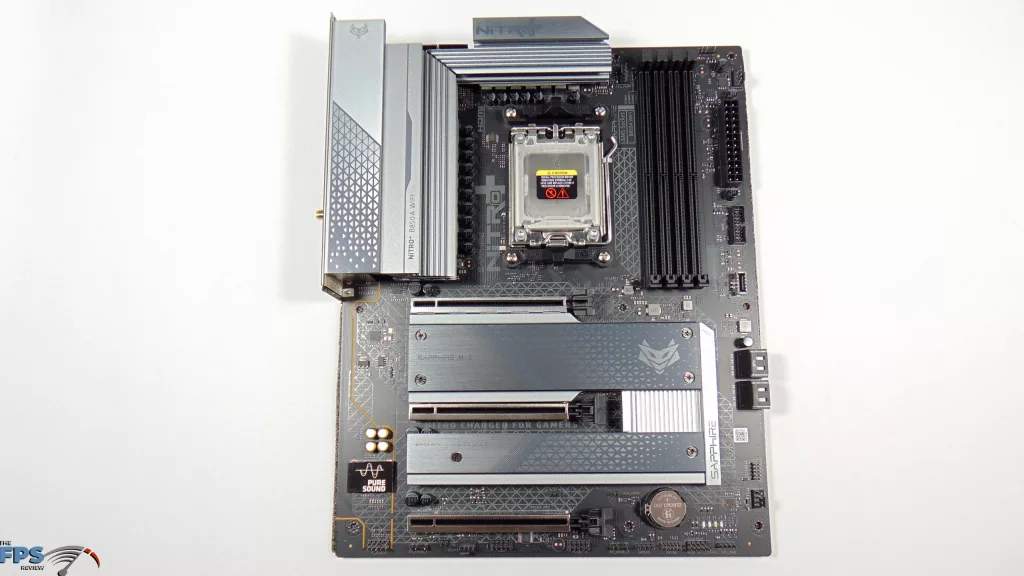
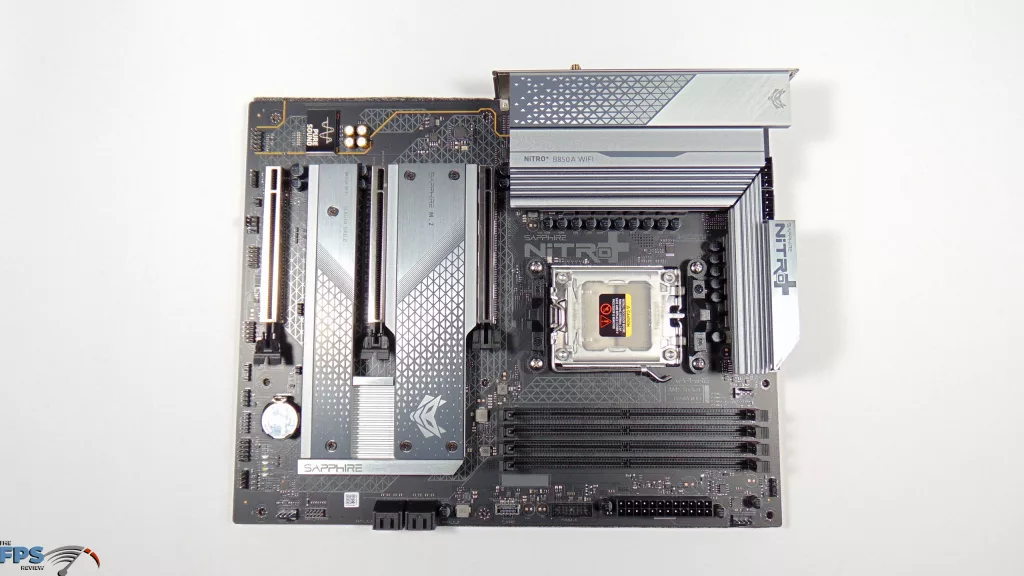
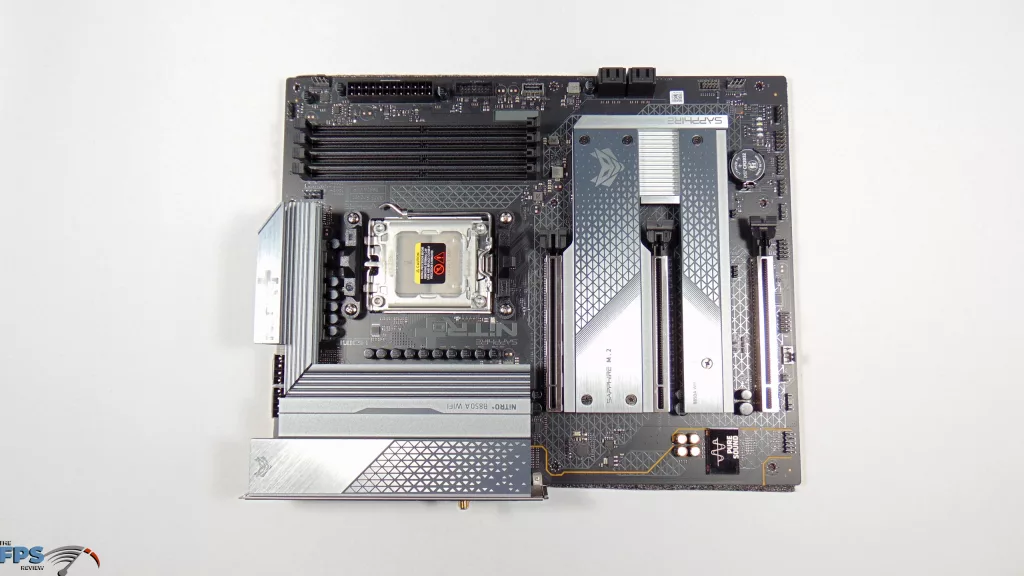
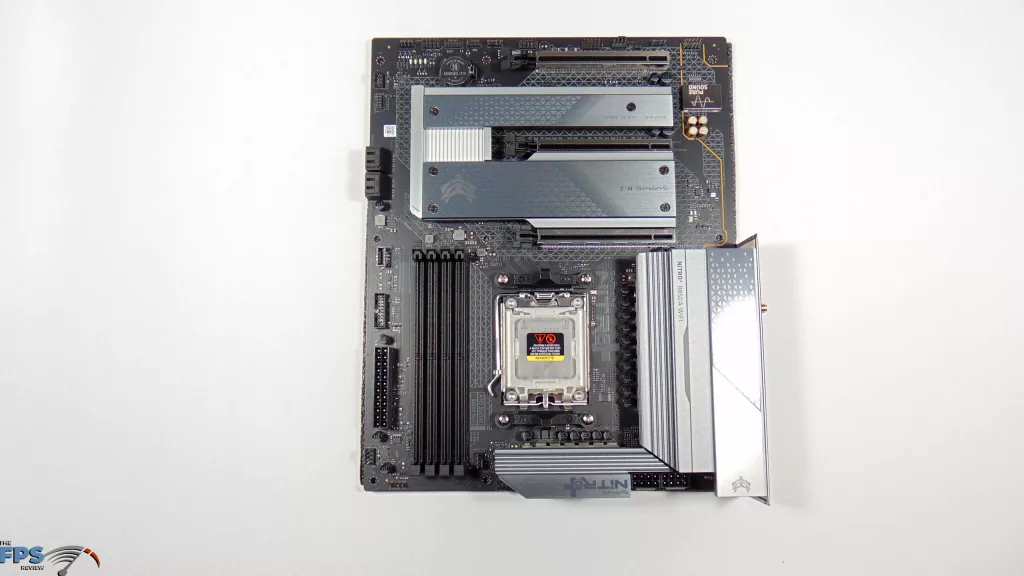
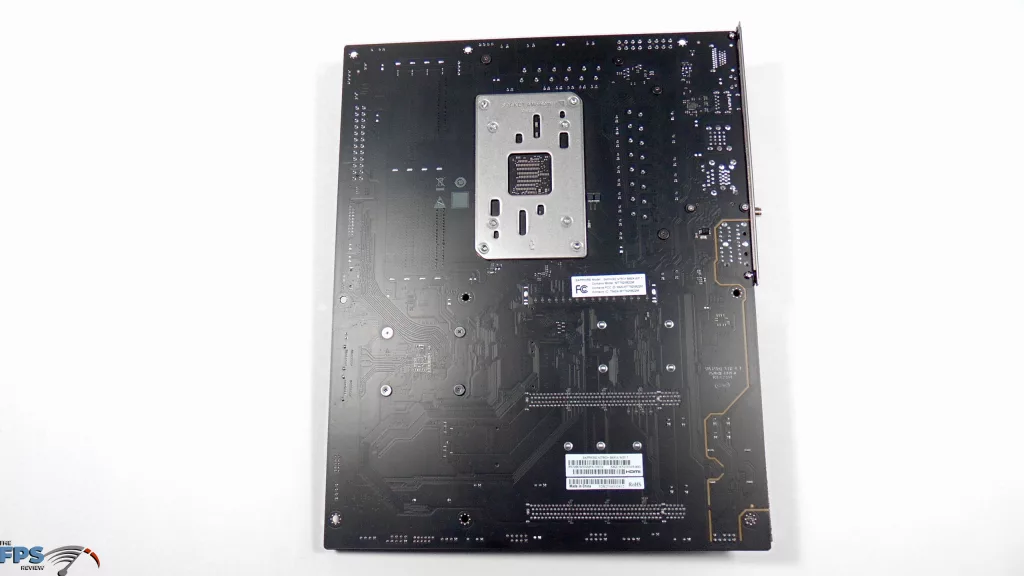
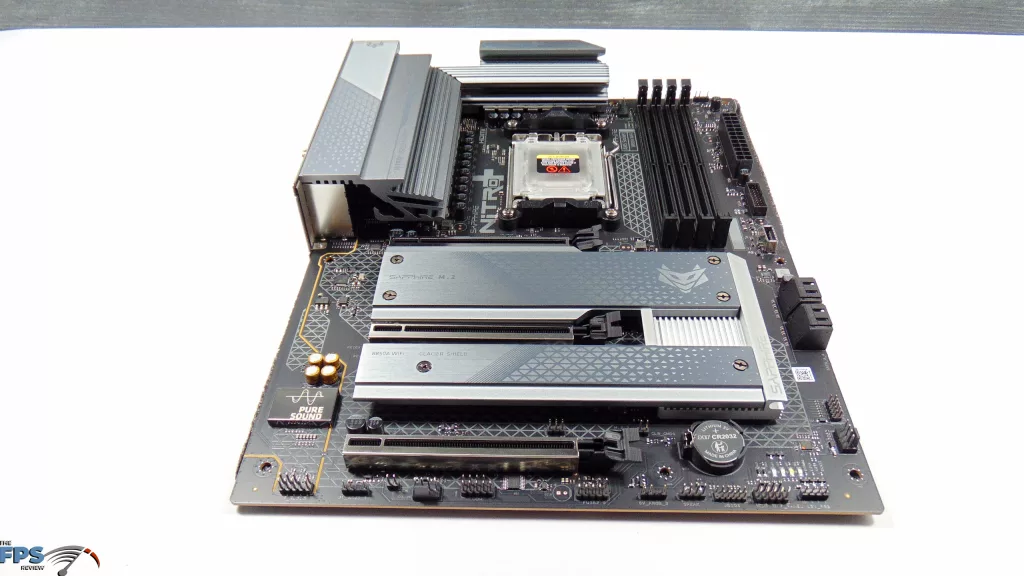
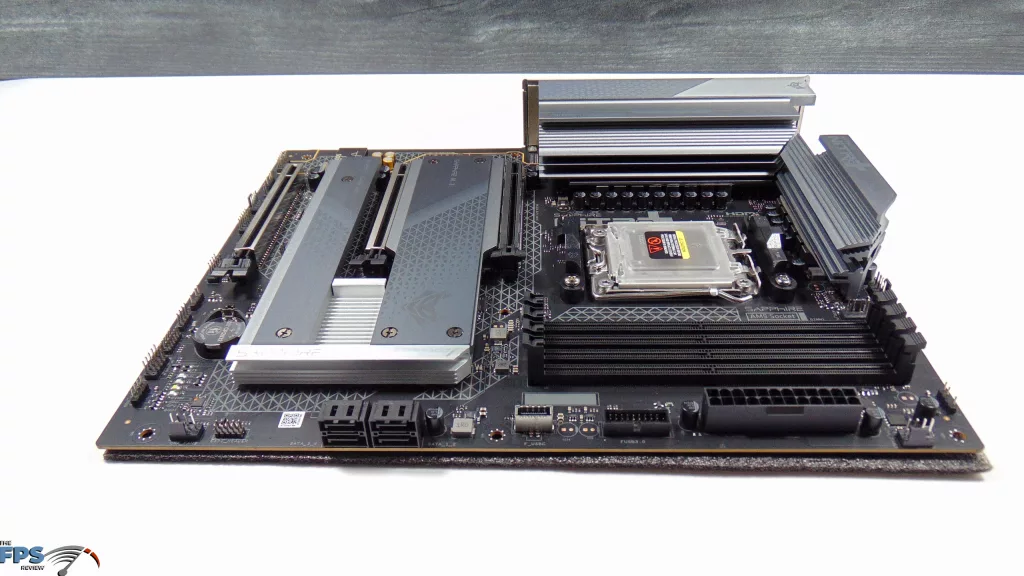
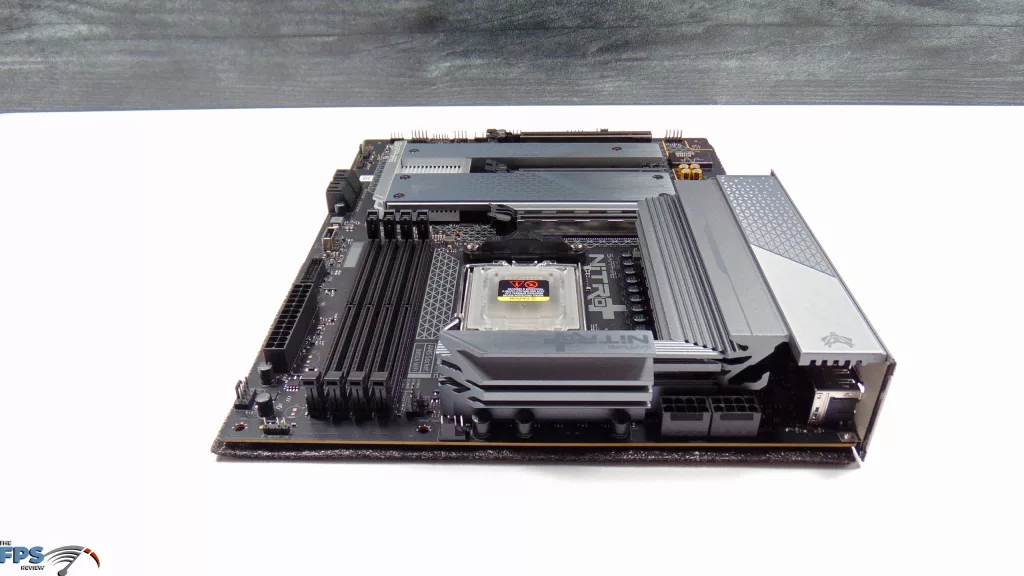
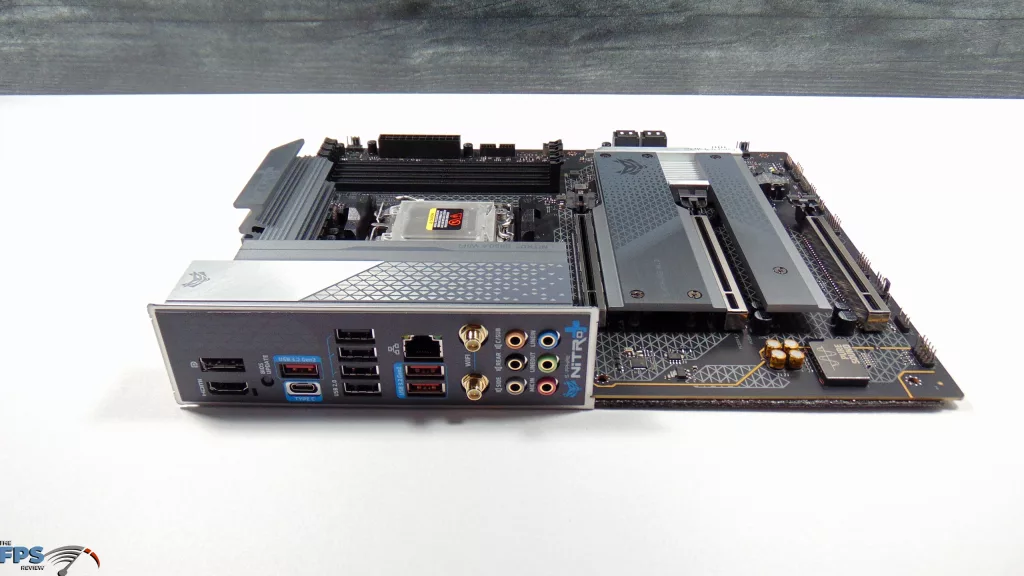
The SAPPHIRE NITRO+ B850A WIFI 7 uses the signature NITRO+ family design language, which has a high-performance industrial look in aesthetics with the black PCB, and silver colored heatsinks and coverings. Even the socket protector is unique with its translucent visual. You’ll see that printed on the PCB is a geometric pattern that accents the metallic finishes. It has provided metal heatsinks for all M.2 slots, as well as the VRMs and chipset. Also printed on the PCB, every component is labeled, so you know what all the pin layouts are for and the M.2 slots.
The SAPPHIRE NITRO+ B850A WIFI 7 is a standard-sized ATX motherboard (305 × 244 mm) based on the AMD AM5 socket using the AMD B850 chipset and DDR5 RAM. It supports AMD Ryzen 9000, 8000, and 7000 series CPUs and DDR5 up to 8,000 MT/s. The motherboard supports both CPU and memory overclocking with full AMD PBO (Precision Boost Overdrive) support. It also features WIFI 7, 2.5Gbps LAN, Bluetooth, and up to USB 3.2 Gen2 Type-A and Type-C, no USB 4 here, however. Above, you can see it comes with a rear I/O shield integrated, but it does not have a backplate.
For storage, it has three total M.2 storage slots: 1x PCIe 5.0 x4, 2x PCIe 4.0 x4 (officially, but you’ll see even better below), and 4x SATA. For expansion, it has 3x PCIe expansion slots: 1x PCIe 5.0 x16, 1x PCIe 4.0 x4, 1x PCIe 4.0 x2, and all are in a 16x slot form factor. Rear USB supported is: 4x USB 2.0, 3x USB 3.2 Gen2 Type-A, 1x USB 3.2 Gen2 Type-C. Front USB header support is: 1x USB 3.2 Gen1 Type-C, 1x USB 3.2 Gen1 2x Type-A, and 1x USB 2.0 2x Type-A. It also has a Debug LED that is color-coded. This being a SAPPHIRE brand motherboard also comes with SAPPHIRE software support using the TriXX-M Utility, as well as SAPPHIRE’s Core BIOS UI Interface.
Packaging and Contents
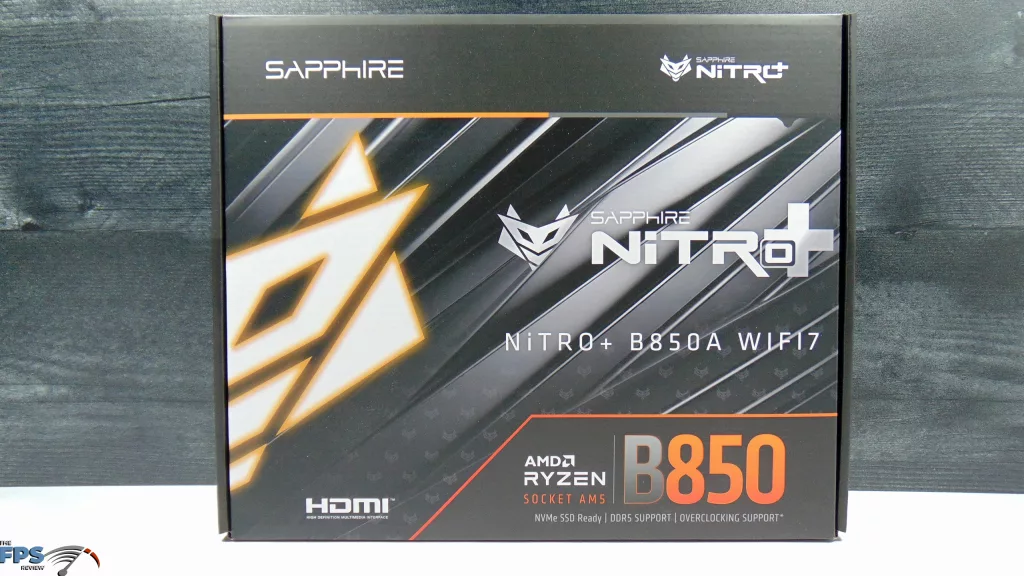
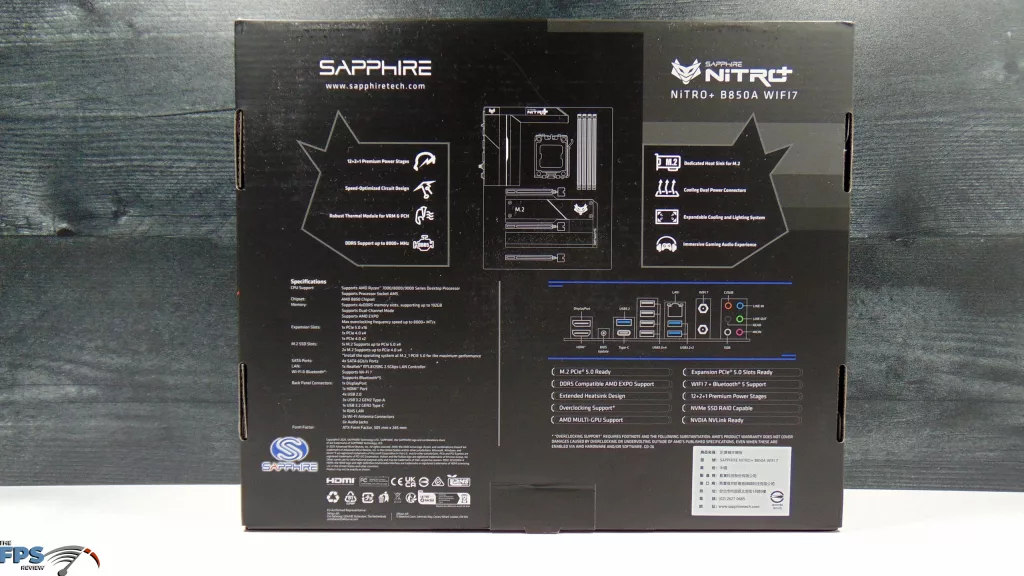
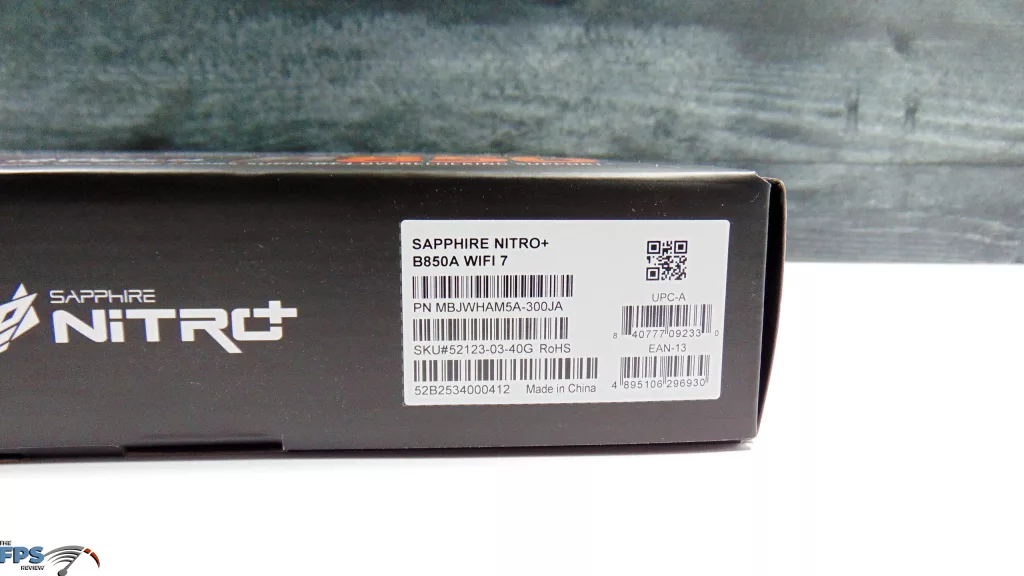
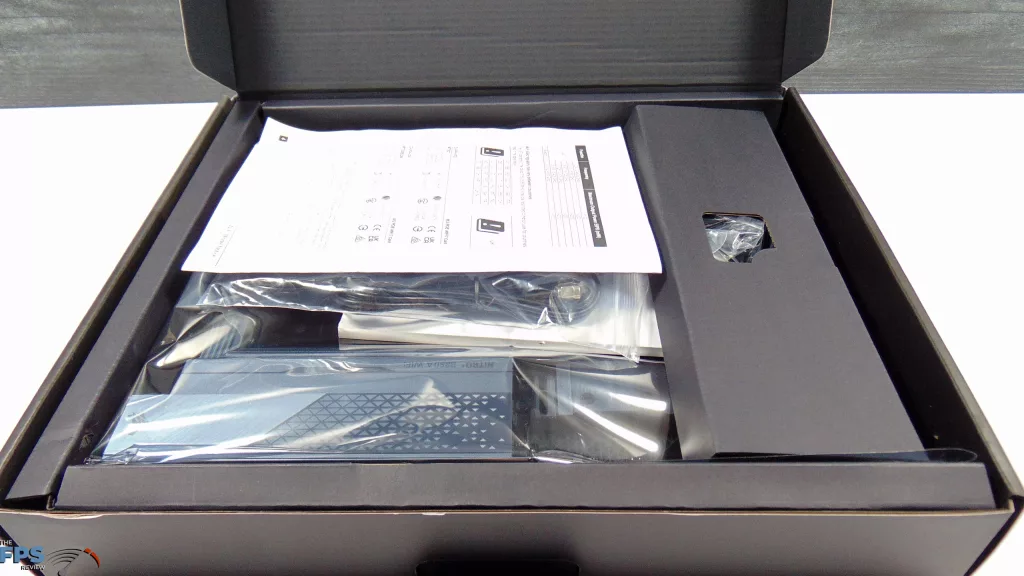
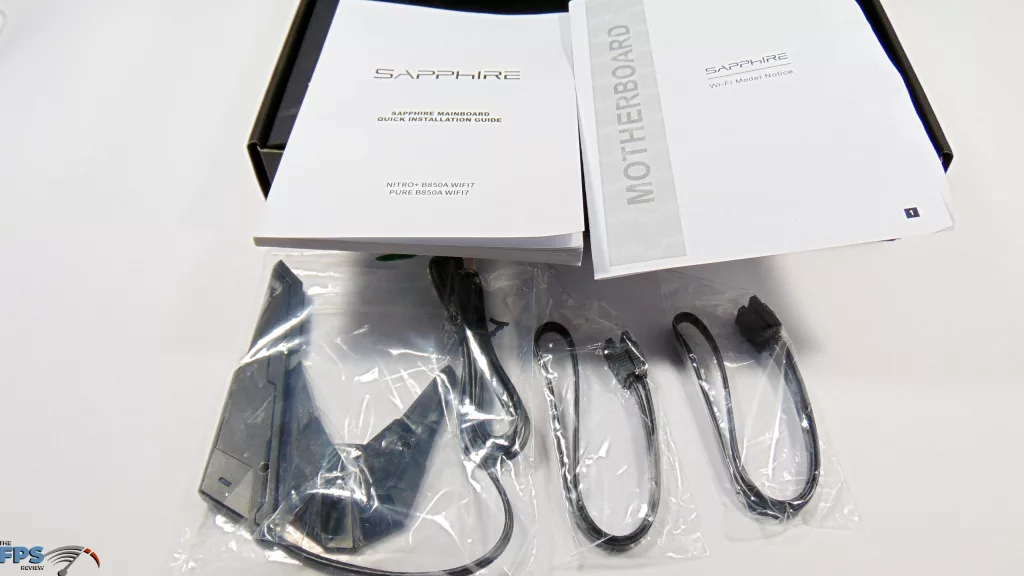
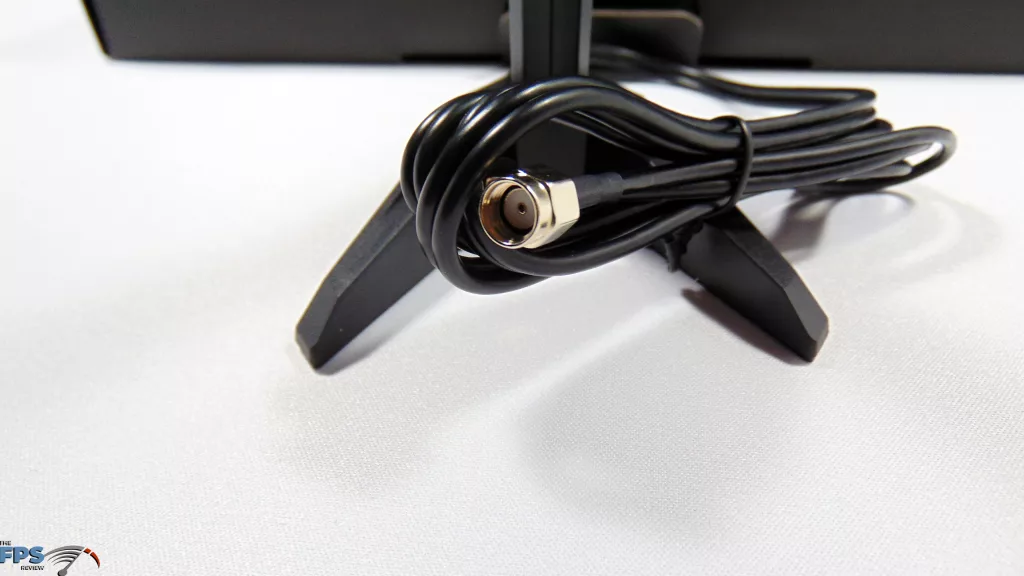
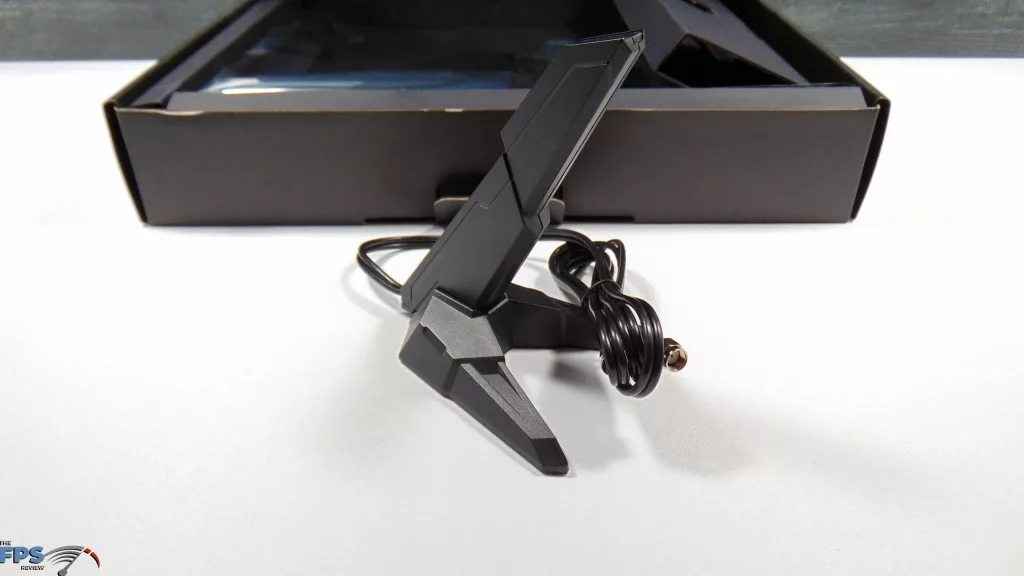
The SAPPHIRE NITRO+ B850A WIFI 7 box has a nice color scheme and clearly prints the B850 chipset. On the back, the specifications are listed, and we do find the VRM configuration, storage, and expansion options it supports listed as well. We are also happy to see a full panel detailing what rear ports are available on the motherboard, with USB versions supported.
Inside the box is a minimal contents package, with no USB device or drivers available inside the box; you will have to rely on web downloads for drivers. There is, however, a very thick and full printed motherboard manual, which is very handy to have for quick reference while setting up your motherboard. Otherwise, there are two SATA cables and the external WIFI 7 antenna. The WIFI 7 antenna uses the old school screw plugs, no quick connection type, and the base is a full magnet, so that you can stick it to your case easily.
Power Delivery
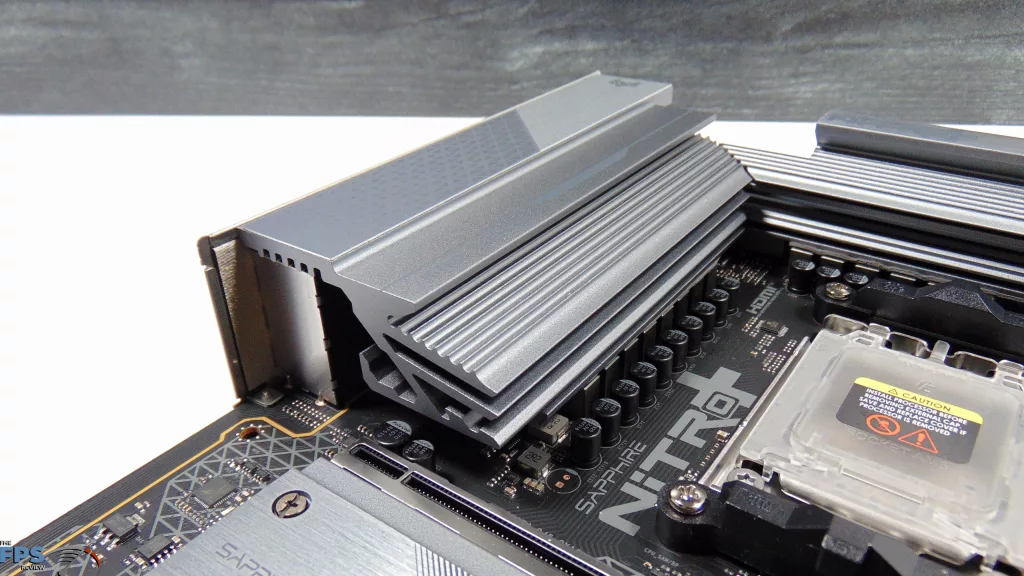
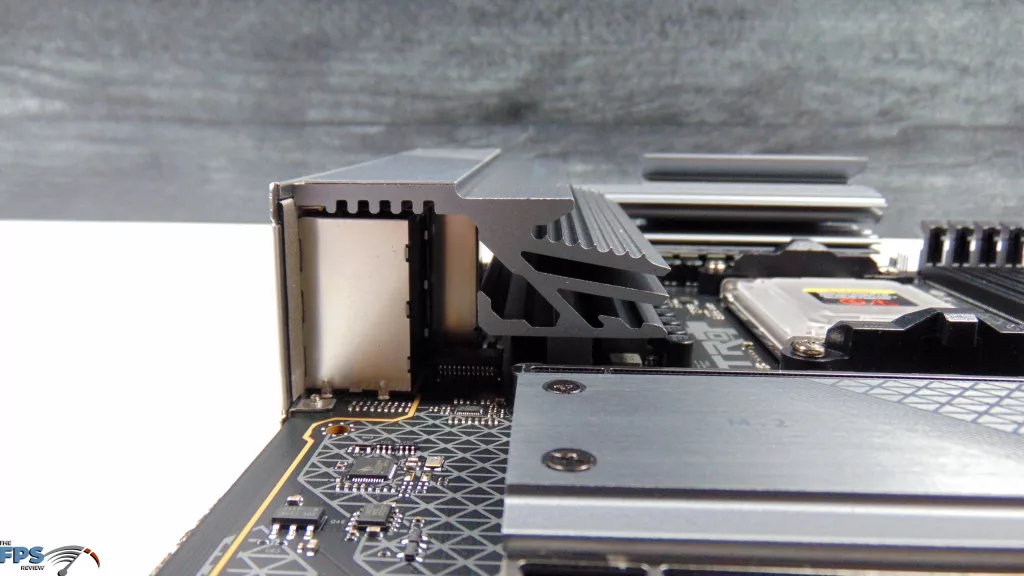
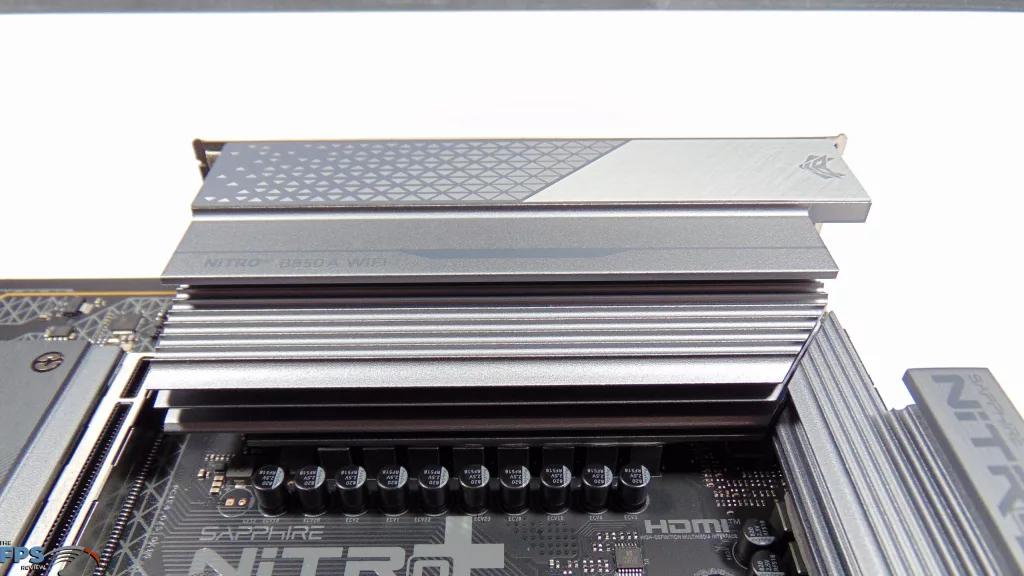
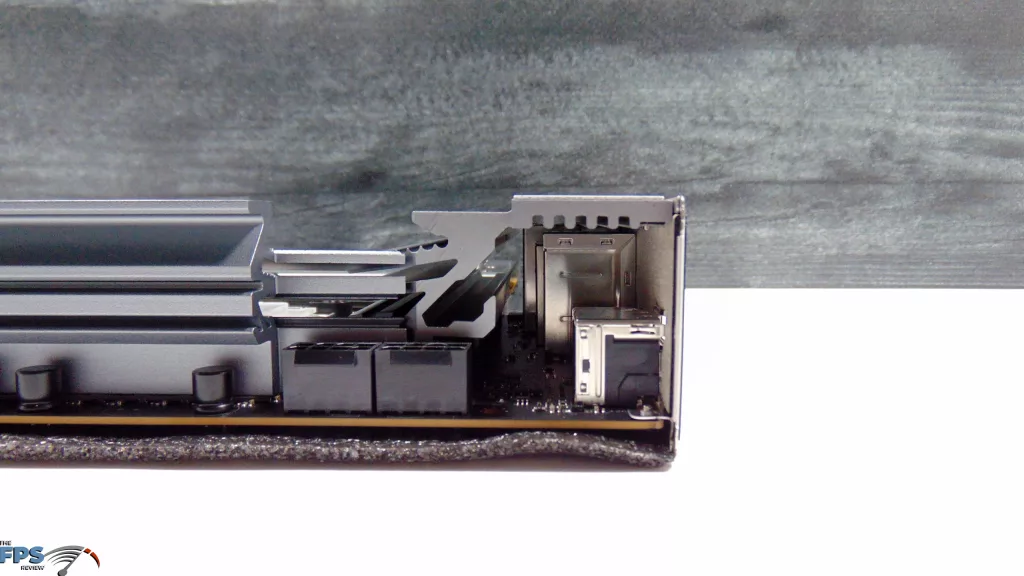
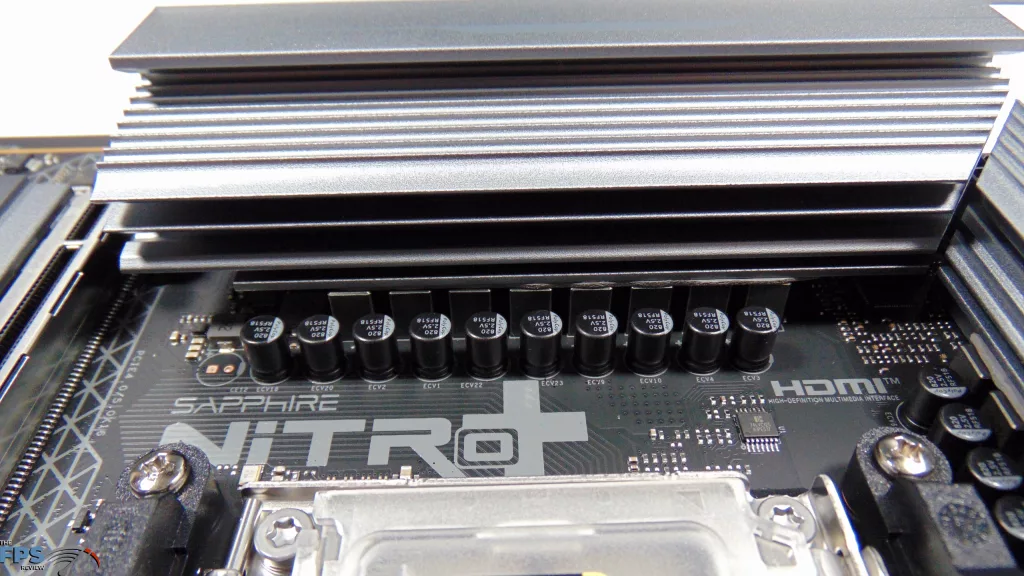
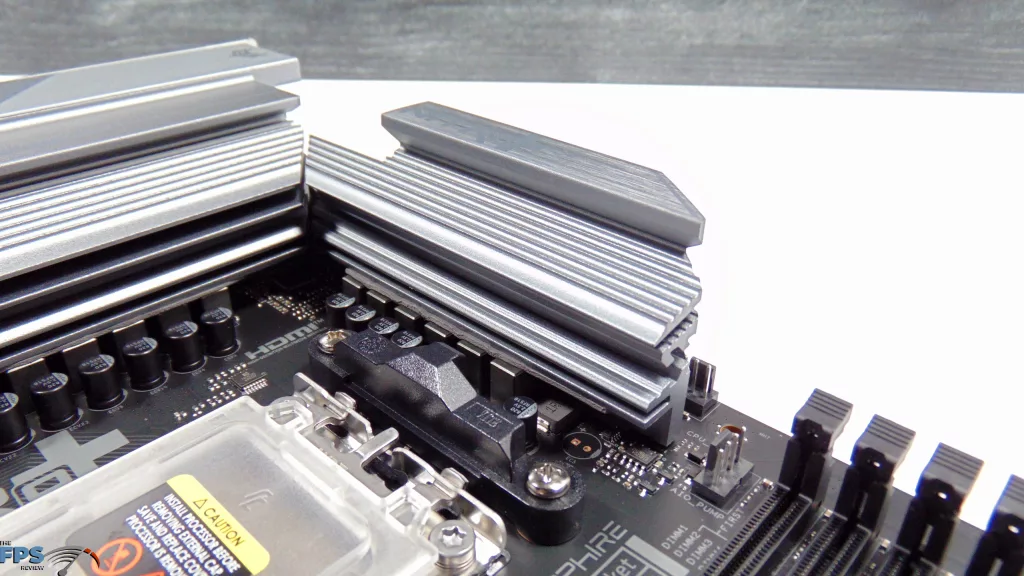
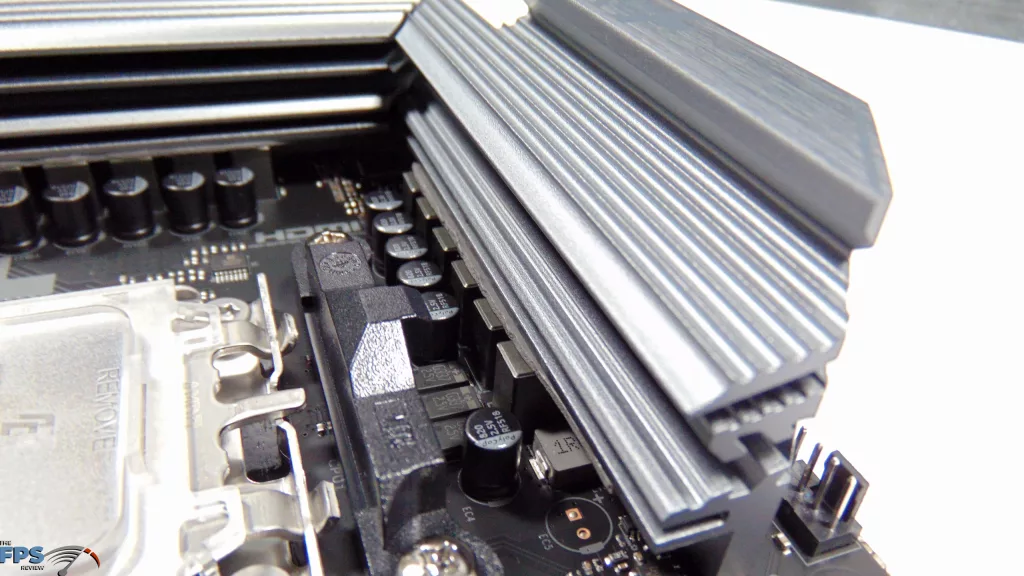
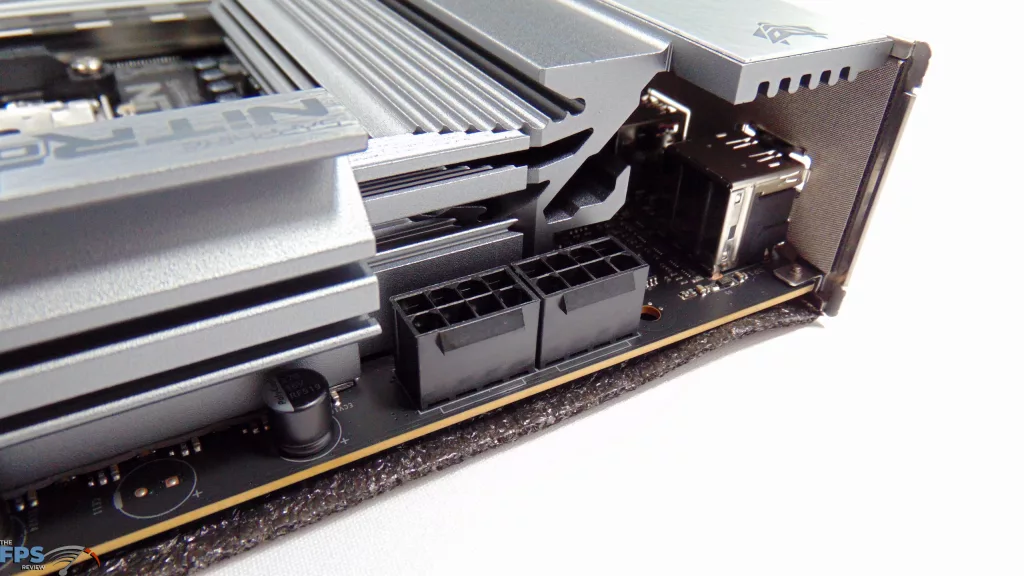
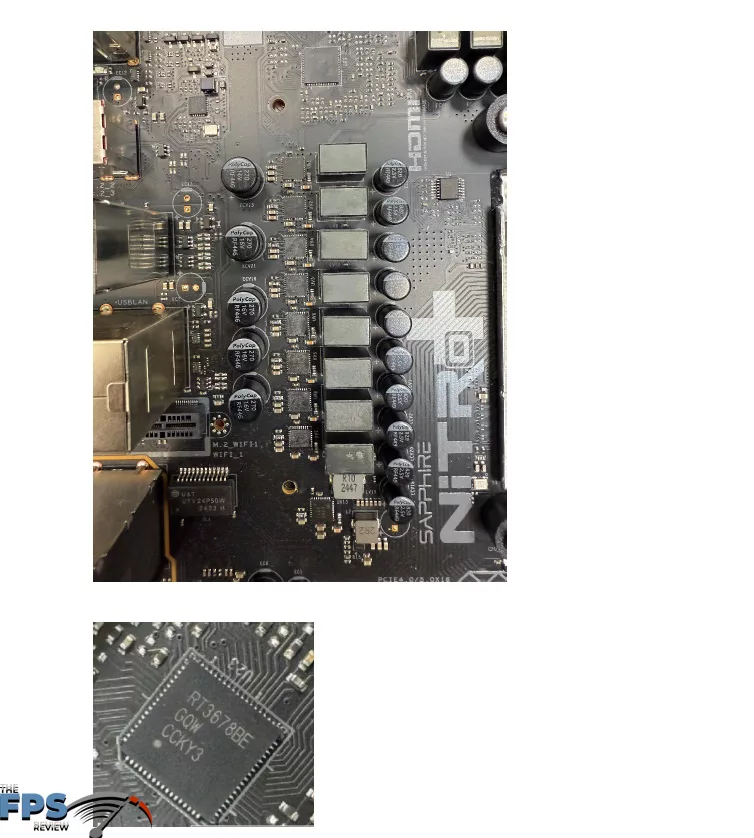
The SAPPHIRE NITRO+ B850A WIFI 7 is a 12+2+1 power phase VRM design with each phase supporting up to 55A powered by the Richtek RT3678 controller and AOS AOZ5510QI DrMOS. SAPPHIRE claims the board fully supports AMD Precision Boost Overdrive. You can see above that both regions of VRMs are cooled by heatsinks, which are of the non-heatpiped variety. The heatsink area is extended outward; however, you can see that quite a bit of null-void space exists behind the primary heatsink in front of the I/O ports.
While a bit more of this heatsink could have been filled in, it being open actually allows air to pass through it better and increases the surface area. The MOSFETS are covered well, although on the top row of Inductors/Chokes, we can see that the heatsink misses the edge a bit and leaves the edges exposed. The 2x 8-pin 12V EPS power connectors reside in the top left section, with a little bit of room to squeeze the cables in, though watch out for sharp edges on the heatsinks; the corner of the heatsink is quite a skin-scraper.
Socket and Memory
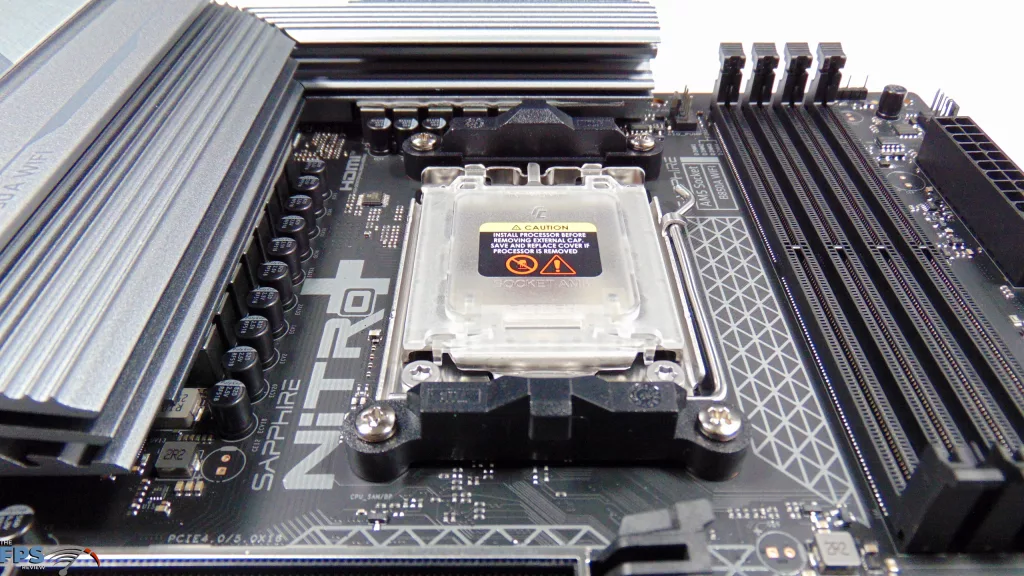
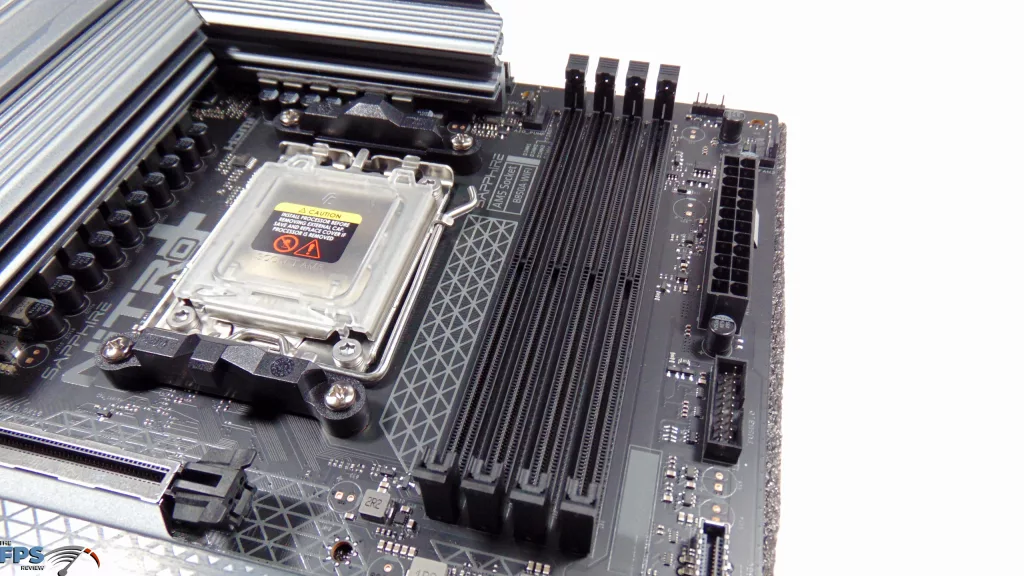
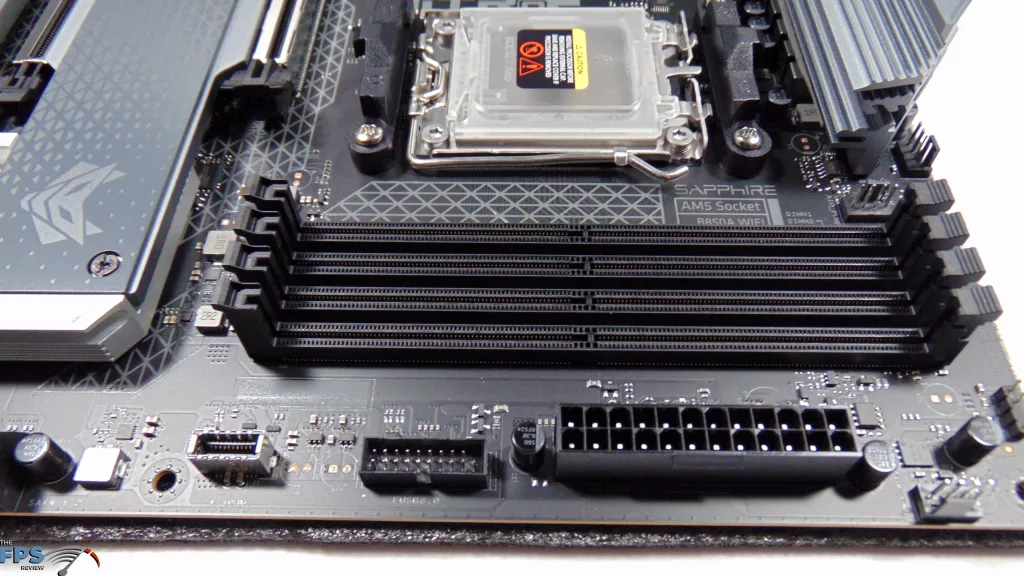
The SAPPHIRE NITRO+ B850A WIFI 7 is a standard-sized AM5 socket motherboard, with full support of Ryzen 7000 and 9000 CPUs. We don’t see any clearance issues with larger AIO pumps or air-coolers; the VRM heatsinks are not oversized and do not creep out into the socket area. The SAPPHIRE NITRO+ B850A WIFI 7 has four DDR5 DIMM slots, and depending on the configuration will be the total size and frequency supported. With all four DIMM slots occupied, it supports up to 256GB with 4x 64GB modules. With two DIMMs installed, the motherboard will support up to DDR5 8000 MT/s in OC mode, according to SAPPHIRE.
Storage & Expansion
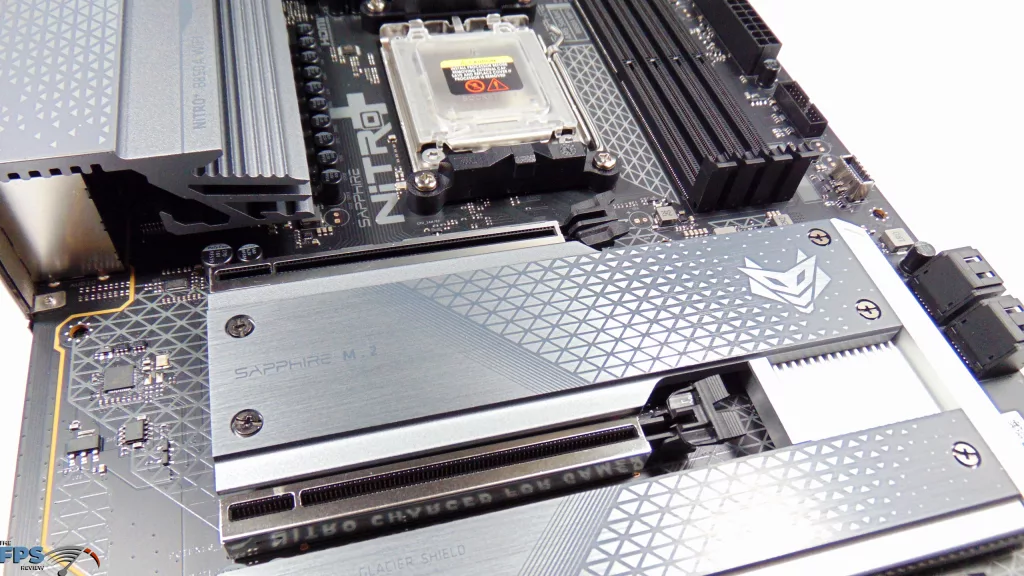
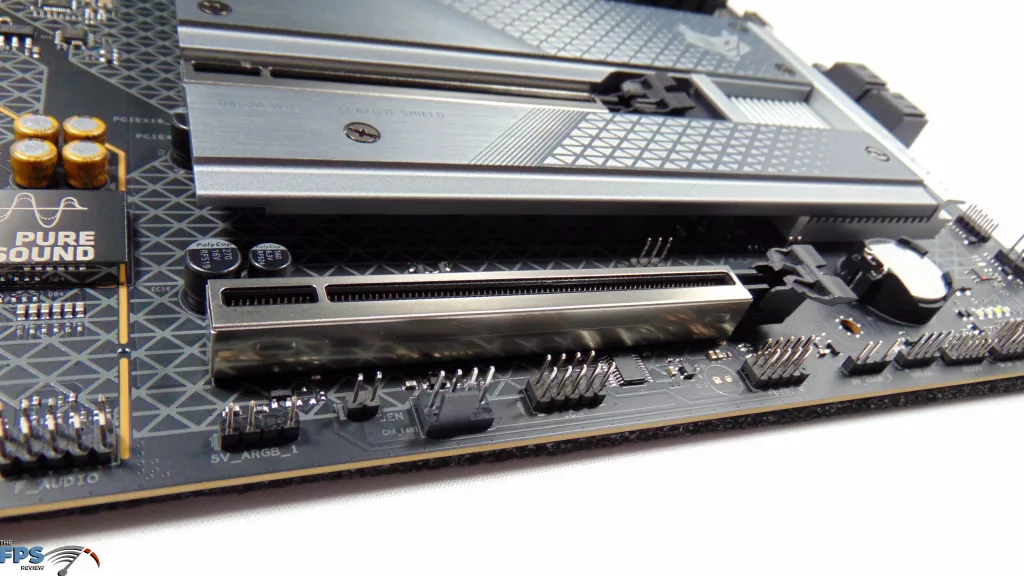
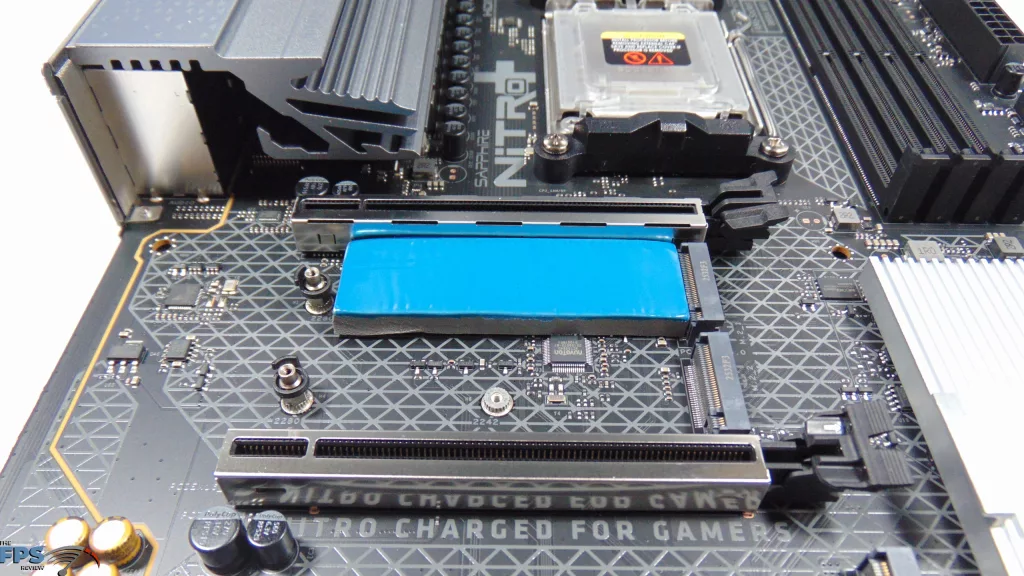
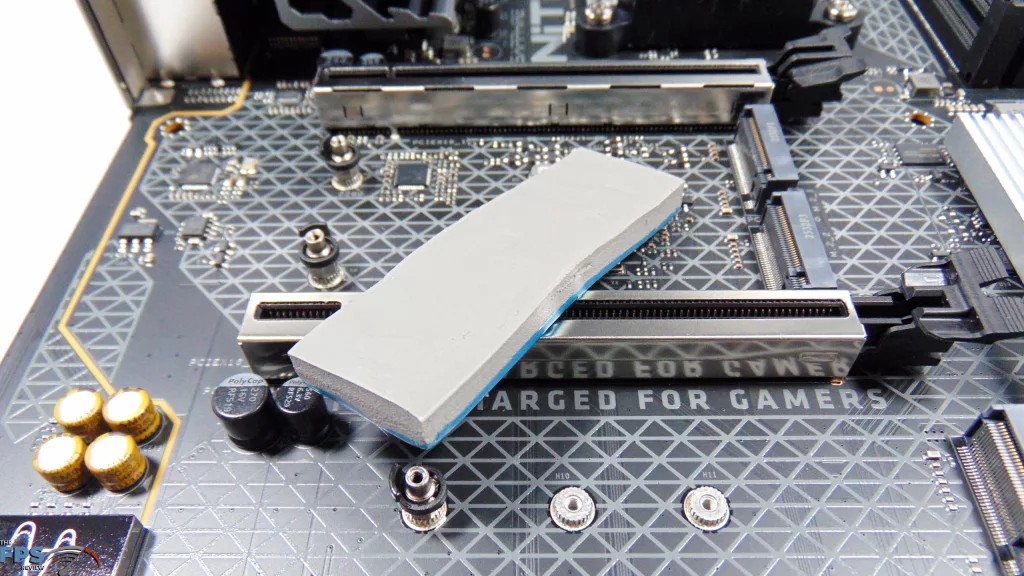
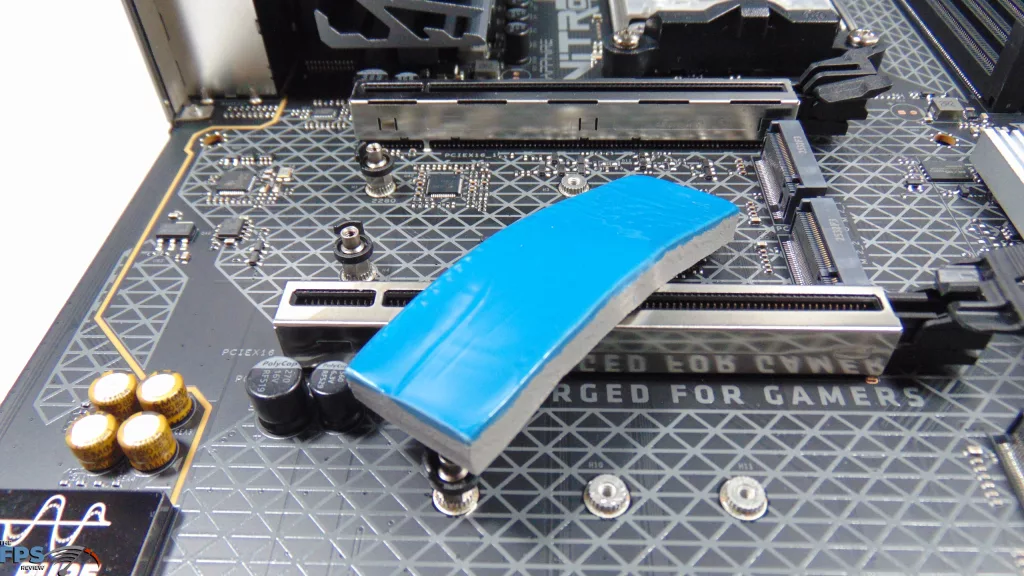
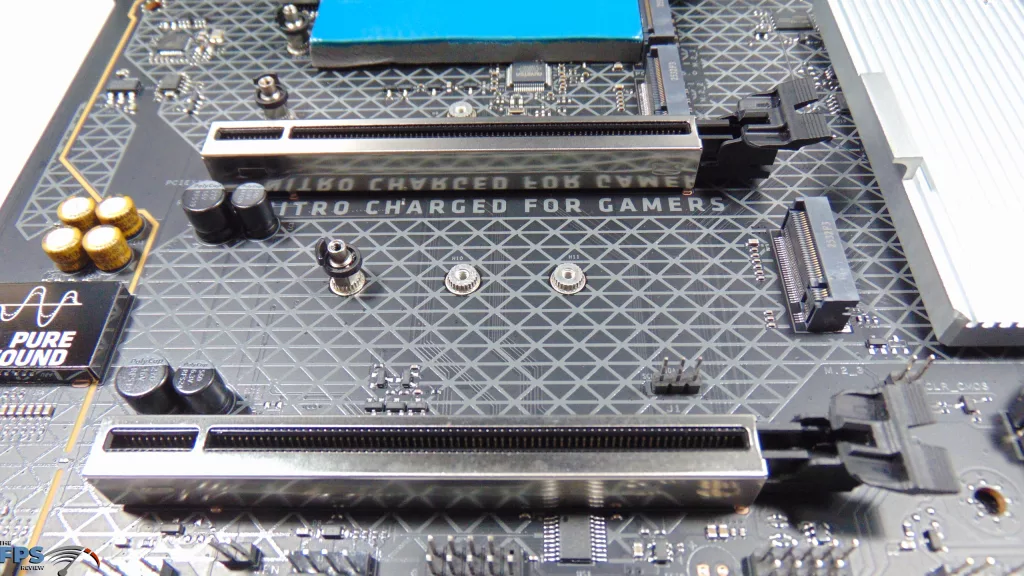
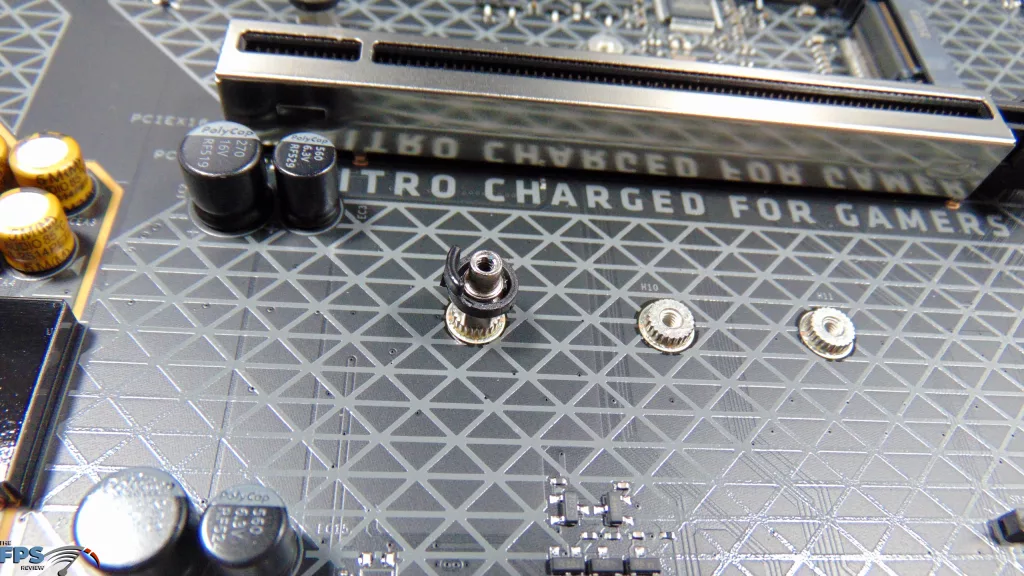
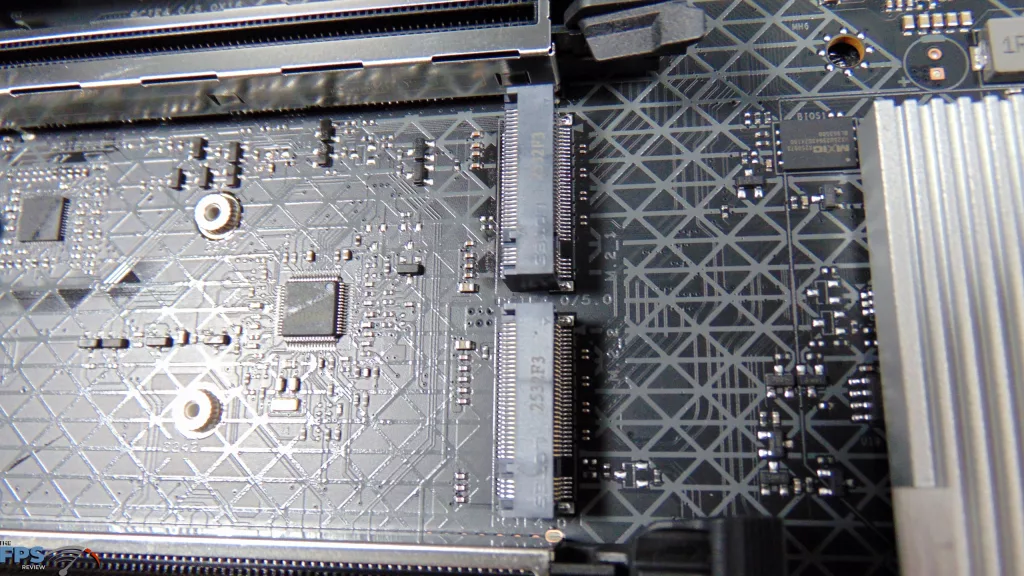
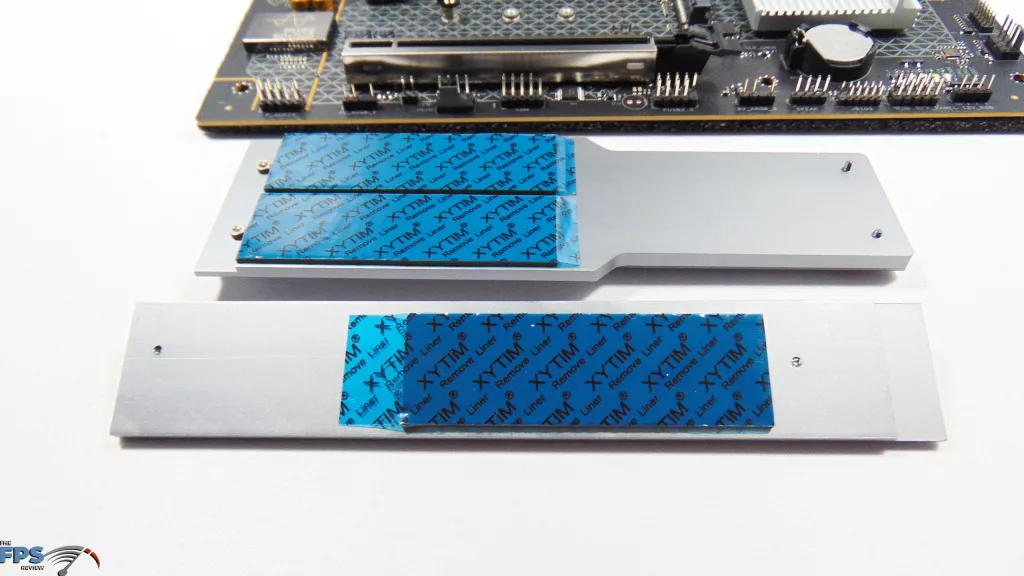
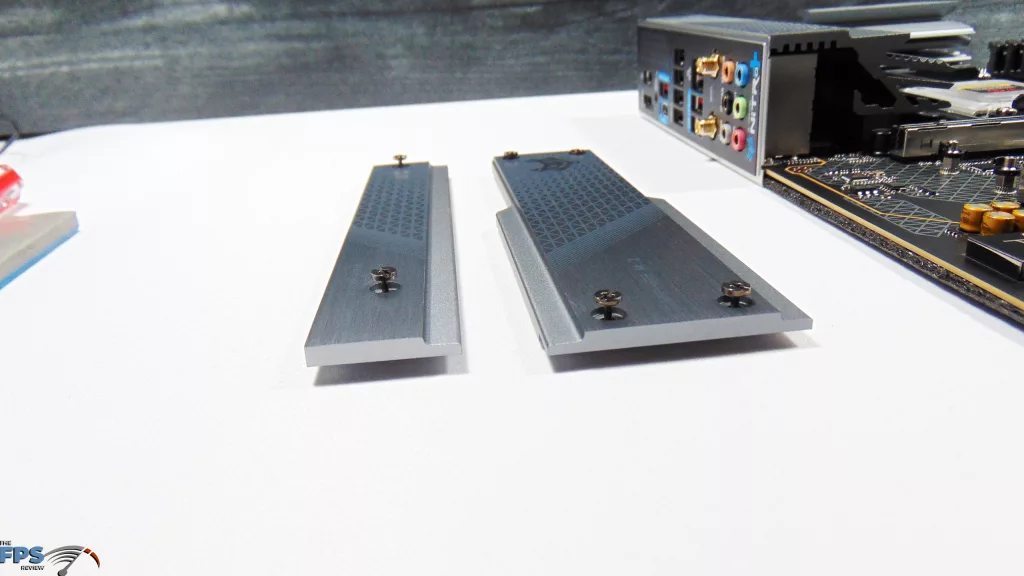
The SAPPHIRE NITRO+ B850A WIFI 7 has three M.2 2280/2242 storage options, a primary PCIe 5.0 x4 (Gen5) slot, and two PCIe 4.0 x4 (Gen4) slots, as well as 4x SATA. The positioning of the primary M.2_1 slot underneath the primary PCIe 5.0 x16 expansion slot is very unfortunate and not preferred. With it underneath your video card, you will not be able to install any SSD with a third-party heatsink. Current generation PCIe 5.0 NVMe SSDs typically come with large, robust heatsinks to manage the thermals of fast PCIe Gen5 drives these days. Some of these heatsinks can be quite large or tall.
With the primary M.2_1 slot being underneath your video card, you simply will not be able to use high-speed PCIe 5.0 Gen5 SSDs with integrated heatsinks at all. You will be required to either buy bare SSDs, without heatsinks, and utilize the SAPPHIRE motherboard heatsink, or strip off and disassemble your SSD’s heatsink in order to install it into this motherboard.
This is not ideal, as typically those third-party heatsinks designed for your new PCIe 5.0 Gen5 NVMe SSD are purpose-built to manage thermals on said SSDs. The position will also increase and trap heat underneath the very hot discrete video card in the primary x16 slot. The preferred location for the primary M.2_1 slot would be above the PCIe 5.0 x16 expansion slot, as we have seen in most modern motherboards.
At least when you are ready to install your M.2 SSD, SAPPHIRE is using a clip mechanism on each M.2 slot for quick and easy installation and removal of SSDs without a screw. Though we found it sometimes difficult to move the clip with our fingers once installed, using a small screwdriver to move the connector worked.
We found the labeling on the PCB to be a bit confusing between the M.2_1 and M.2_2 slots. It is written in this order: PCIe 4.0/5.0, as you typically read left to right, you would think the PCIe 4.0 is the top slot, and the PCIe 5.0 is the bottom slot underneath; however, that isn’t the case, the PCIe 5.0 slot is the top slot, and the PCIe 4.0 slot is the bottom slot.
However, this may not be an issue because our testing revealed something interesting, and our benchmarks below in the M.2 Storage Performance section will talk about that. It should also be noted that using a second PCIe 4.0 Gen4 M.2 SSD will disable the second PCIe 4.0 x4 (x16) expansion slot altogether. SAPPHIRE also notes that RAID 0, 1, 5, and 10 will be supported in an upcoming BIOS update, but aren’t supported at the time of writing.
When you are ready to install your M.2 SSDs, SAPPHIRE has two separate aluminum heatsink plates. The top one combines the M.2_1 and M.2_2 slots, while the bottom one is for the M.2_3 slot. Both heatsinks make contact with the chipset heatsink and also spread heat out over it as well for more surface area. SAPPHIRE does provide thermal pads for all three M.2 slots.
In an interesting move that we haven’t seen before, for backside SSD cooling, SAPPHIRE uses a separate, very thick thermal pad on the bottom that just sits on the M.2_1 slot. It has a sticky bottom to it, which just sticks onto the PCB; it can easily just pull off and be put on any other M.2 slot you need. You will need to peel off the top part of it before installing your SSD. This piece feels a little janky; it is not typical for modern motherboards with bottom sleds that are more integrated into the M.2 slot via screws, in other motherboard designs we’ve tested.
In terms of expansion slots, there are 3x physical x16-sized PCI-Express expansion slots, though they are all wired differently. The primary PCI-Express expansion slot is configured for PCIe 5.0 x16 speeds, the second expansion slot is configured for PCIe 4.0 x4 speeds, and the third expansion slot is configured for PCIe 4.0 x2 speeds. The second expansion slot (PCIe 4.0 x4) shares lanes with the second (M.2_2) PCIe 4.0 Gen4 M.2 slot. The primary PCIe 5.0 x16 slot is reinforced with a metal shield to give it better durability and stability with heavy video cards, though all three slots have metal housings, which is a nice touch.
I/O
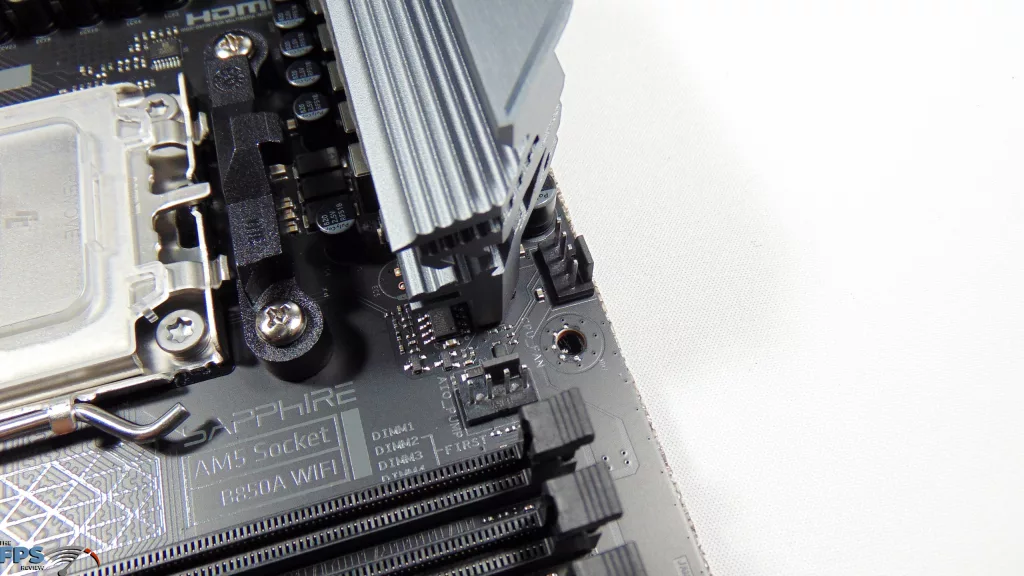
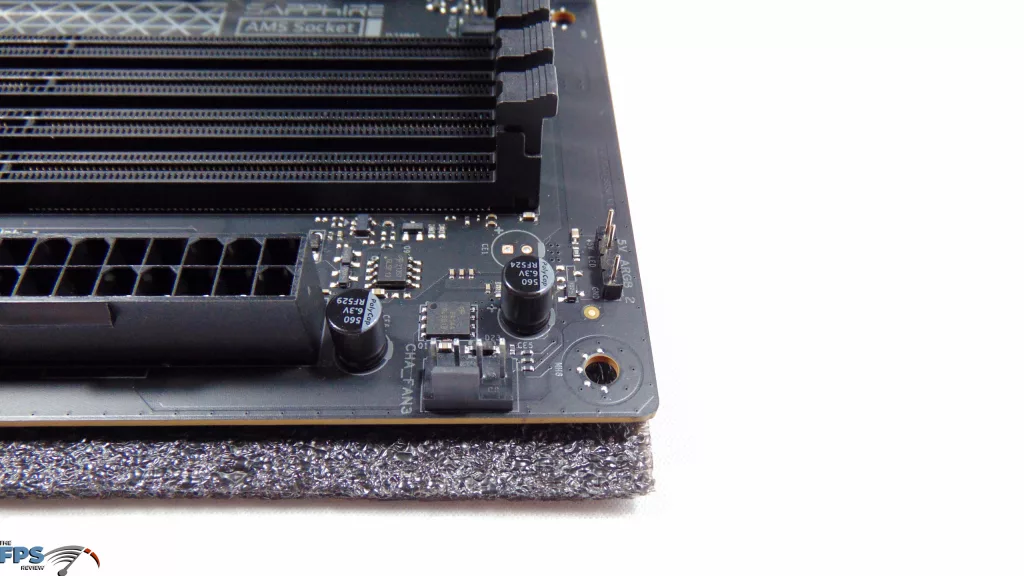
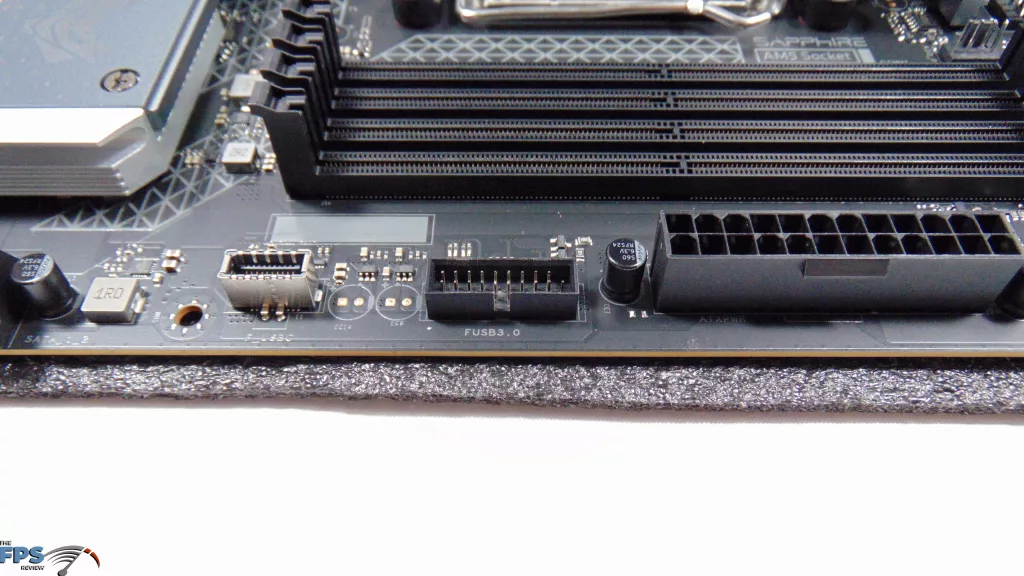
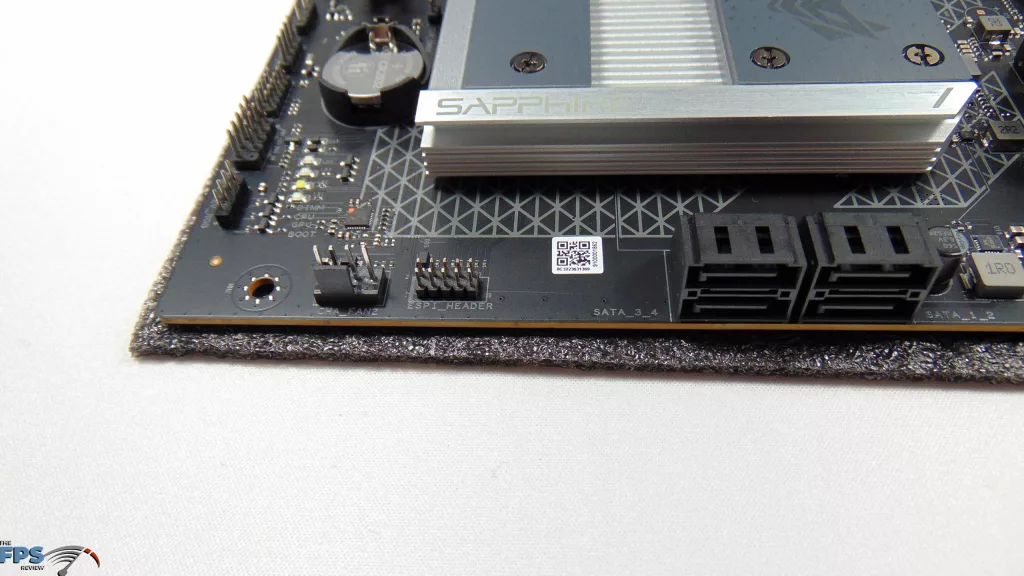
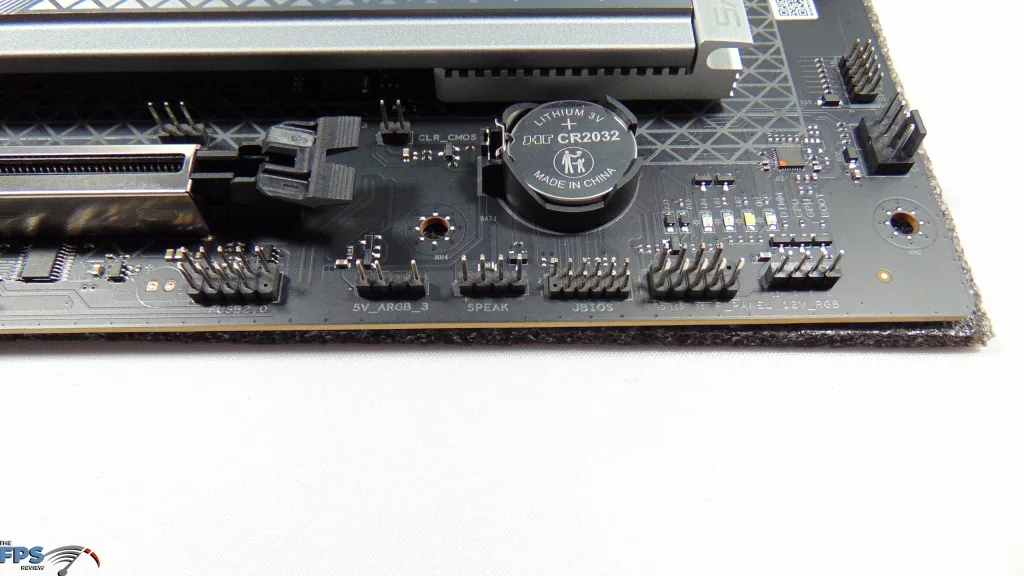
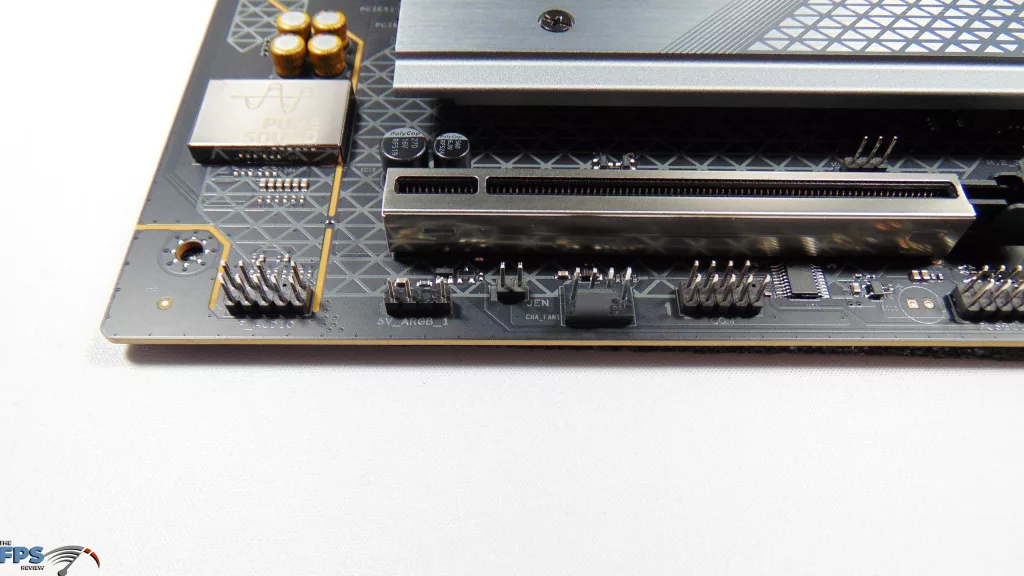
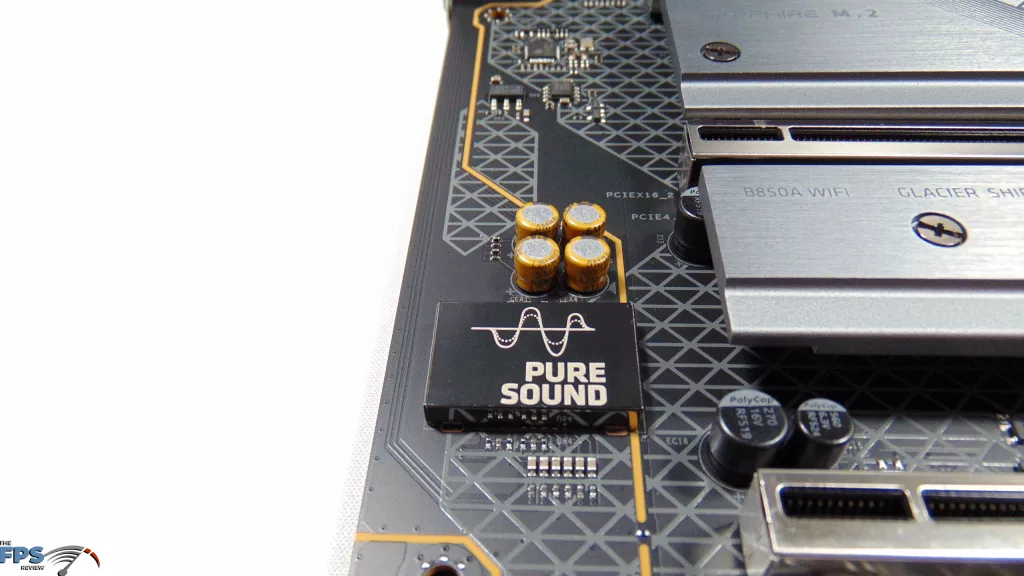
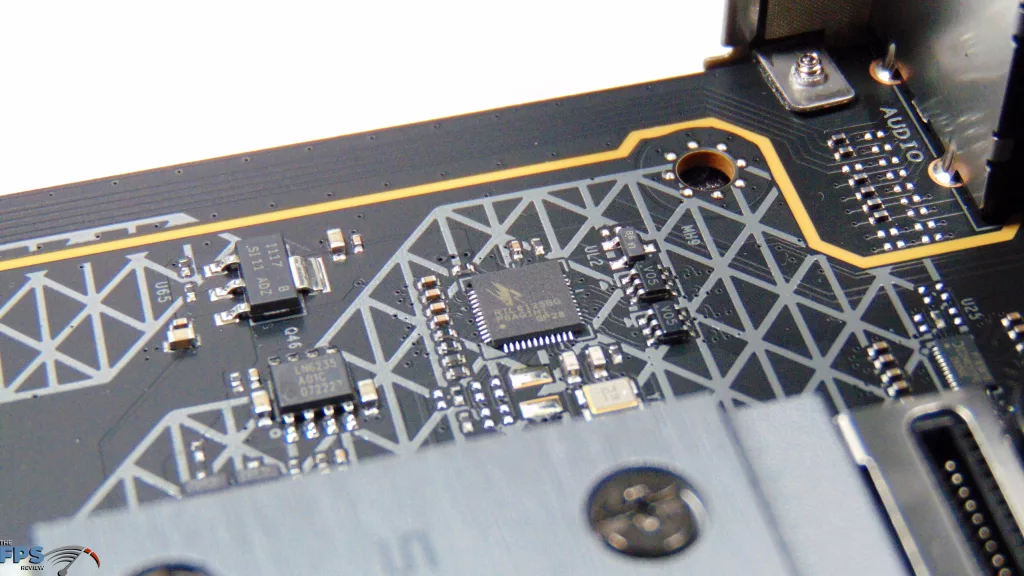
Starting in the top right corner of the SAPPHIRE NITRO+ B850A WIFI 7, you will find the 4-pin CPU_FAN header and 4-pin AIO_PUMP header. The CPU_FAN header is tucked away behind the VRM heatsink, and a little bit hard to squeeze your fingers between to insert. Coming down the side, starting at the top, is a 5V_ARGB_2 connector and CHA_FAN3 header. There are 3x total 5V ARGB headers on this motherboard, and ARGB is handled by the Holtek F52352 controller; Microsoft Dynamic Lighting is supported. There are 3x total chassis fan headers on this motherboard.
Moving down is the ATX power connector, and then two internal USB connectors. FUSB3.0 is the front panel USB 3.2 Gen 1 Type-A connector, and F_USBC is for the front panel USB 3.2 Gen 1 Type-C. Toward the bottom are the four SATA connectors, an ESPI_HEADER, and a CHA_FAN2 header. eSPI stands for Enhanced Serial Peripheral Interface, and allows a connection for devices that require that interface.
Starting at the bottom, on the right, you’ll find the Debug LED to identify troubleshooting. The red LED indicates a CPU issue, the white indicates GPU, green indicates boot status, and yellow indicates DRAM. It’s a quick way to ensure everything is booting normally. You’ll see here also the 12V_RGB connector, front panel connector, JBIOS, SPEAK, 5V_ARGB_3, and FUSB2.0. 12V RGB is an older standard, but it is supported here for such devices to allow a single signal for synchronizing all colors. The front panel connector supports PWR_ON, RES, PWR_LED, and HD_LED.
The JBIOS connector is the BIOS burner connector, which is used to upgrade the BIOS when the regular BIOS upgrade is not possible, which is good for recovery. This motherboard even has an old-school speaker connector for chassis speakers. The FUSB2.0 connector is the single front panel USB 2.0 connector. On the left side of the bottom right is a COM header, yes COM, and CHA_FAN1, and 5V_ARGB_1 and F_AUDIO. We are a bit surprised to see a COM port, but this motherboard does support an old-school serial port connection. There is also a front audio panel connector.
Audio is handled by an integrated Realtek ALC897 audio with shielding, supporting 7.1-channel surround sound. SAPPHIRE claims that it offers an SNR of up to 95 dB and supports 16-, 20-, and 24-bit audio at sample rates up to 192 kHz. Ethernet is handled by a Realtek RTL8125GB chip delivering 2.5Gbps speeds. WIFI & Bluetooth are handled by a MediaTek MT7925 module supporting WIFI 7 (802.11 a/b/g/n/ac/ax/be) across 2.4GHz, 5GHz, and 6GHz bands with Bluetooth 5.4.
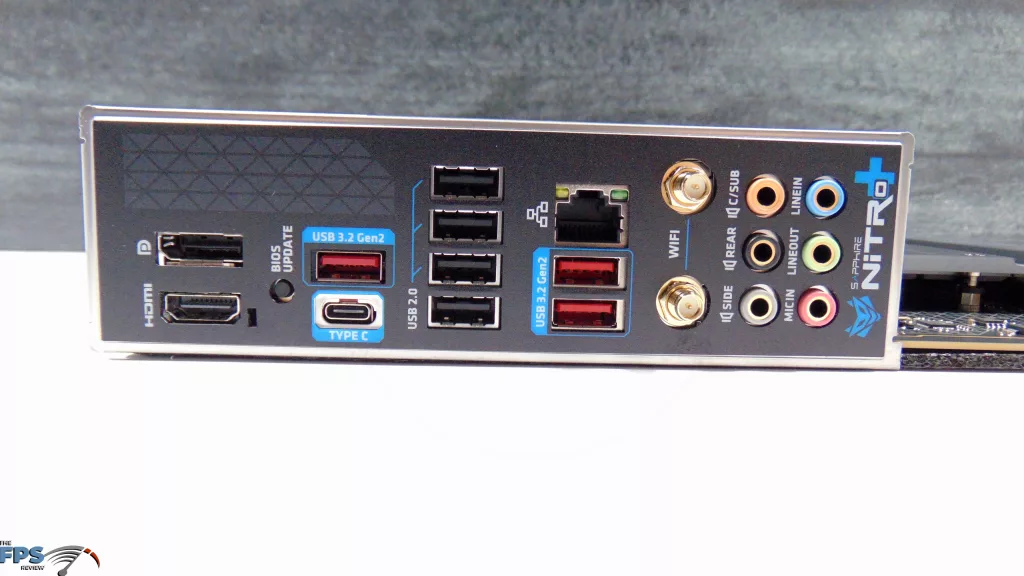
The SAPPHIRE NITRO+ B850A WIFI 7 has an integrated I/O shield, and we like the labeling for the USB ports with the squared off sections clearly indicating what versions the ports are. You’ll find DisplayPort 1.2 and HDMI 1.4 ports available on the motherboard, which is great to see both connectors on there. The SAPPHIRE NITRO+ B850A WIFI 7 actually has quite a bit of USB 2.0 ports, with four total USB 2.0 only ports supported, great for peripheral devices like mice and keyboards, but not so good for modern storage devices, or video capture devices.
Otherwise, there are a total of 3x USB 3.2 Gen2 Type-A connectors and 1x USB 3.2 Gen2 Type-C. USB 3.2 Gen2 has speeds only up to 10Gbps, so this motherboard only has a total of 3x Type-A 10Gbps ports and 1x Type-C 10Gbps port. It would have been nice to see a USB 3.2 Gen2x2 20Gbps port, but alas, that is not there. The front panel connectors also support only 1x USB 3.2 Gen 1 Type-A and Type-C, which are even slower at just 5Gbps max.
It has 2.5Gbps LAN per a Realtek RTL8125GB chip. It also has WIFI 7 from the MediaTek MT7925 module supporting WIFI 7 (802.11 a/b/g/n/ac/ax/be) across 2.4GHz, 5GHz, and 6GHz bands with Bluetooth 5.4. However, it does use the older style screw plug-ins for the WIFI antenna, instead of a quick-connect system. Otherwise, for audio, it has SIDE, REAR, C/SUB, MICIN, LINEOUT, and LINEIN, with no S/PDIF connector available.
